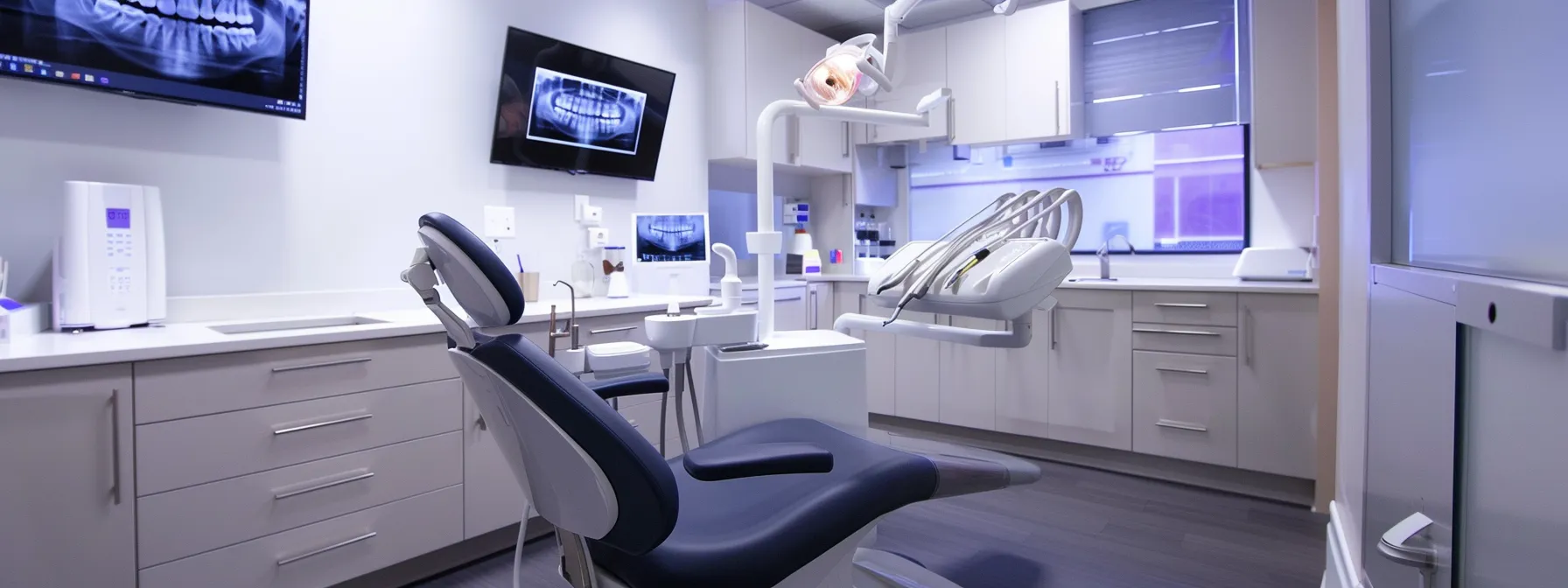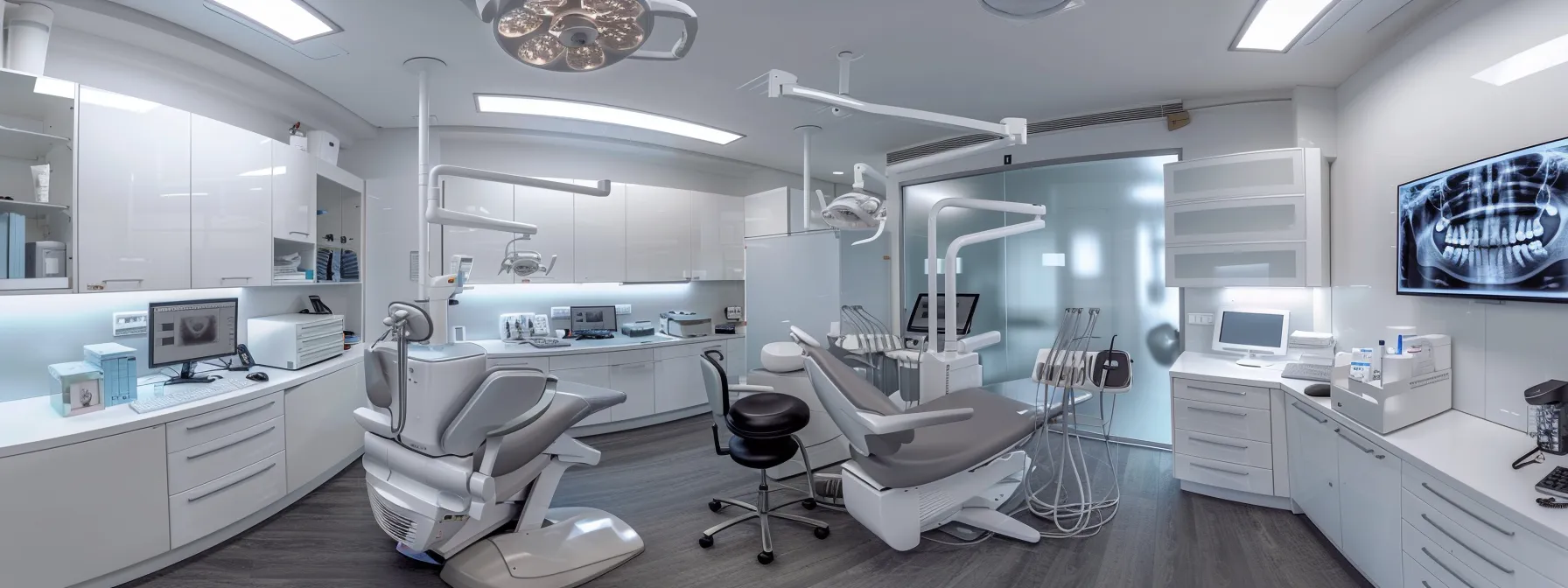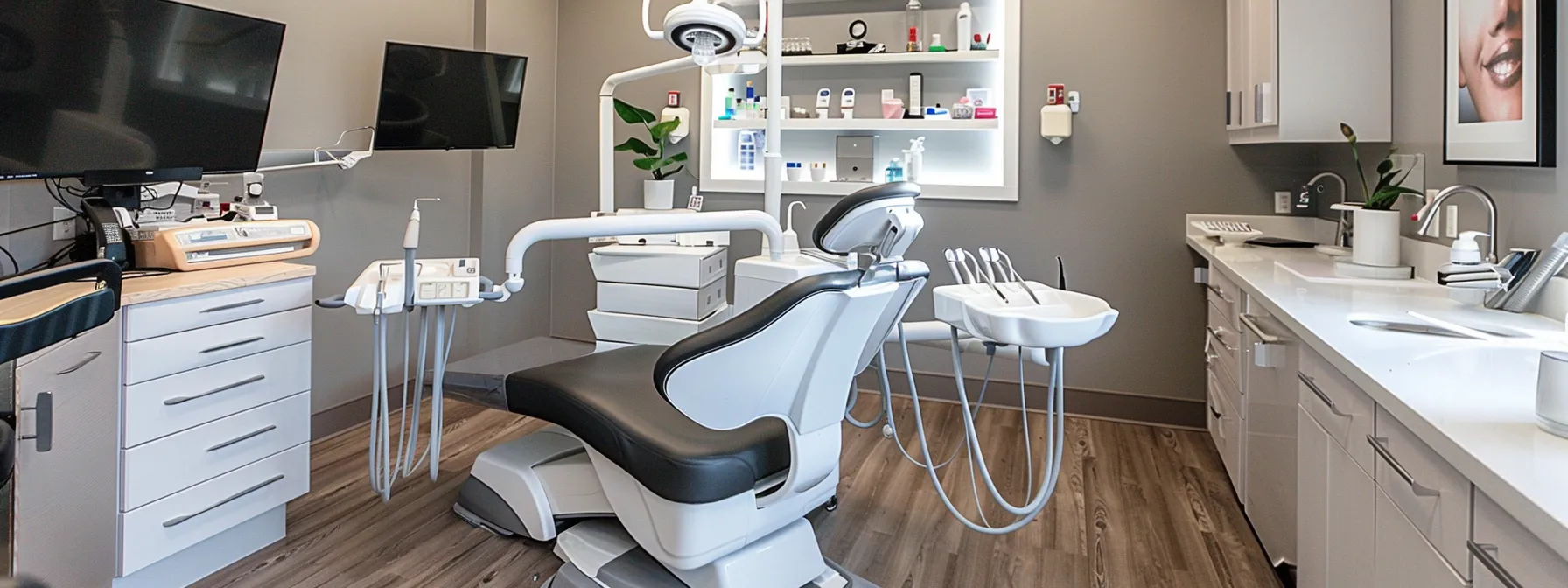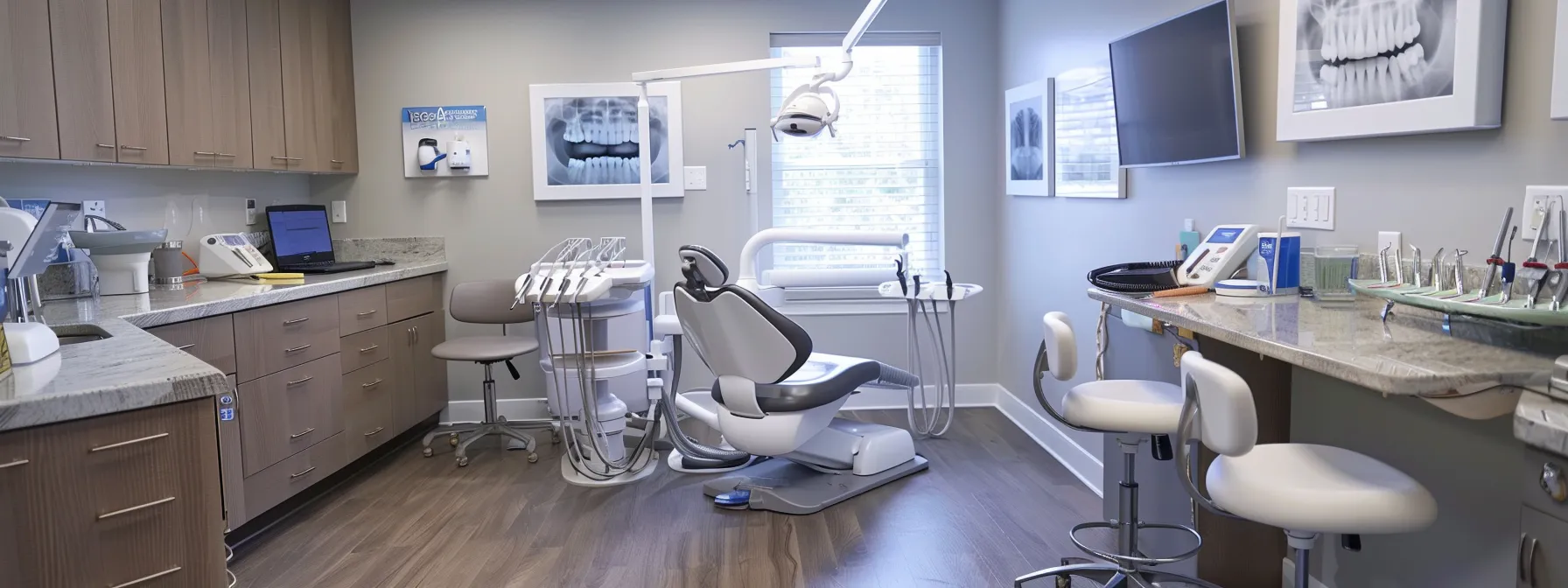Dental implant surgery can seem intimidating, especially if you’re worried about what to expect. This post will break down the dental implant procedure into simple steps, covering everything from the surgery itself to what happens afterward. Readers will learn about the key phases of the process and how choosing the right implant can impact long-term success. Addressing these concerns will help ease anxiety and provide clarity, enabling individuals to approach their dental implant journey with confidence.
Key Takeaways
- A thorough evaluation before surgery is crucial for successful dental implant outcomes
- Understanding anesthesia options helps patients feel more comfortable during the implant procedure
- Personal factors, like jawbone density, influence the choice of dental implant type
- Following post-operative care instructions aids in smooth recovery and healing time
- Regular follow-up appointments monitor healing and address any potential complications effectively
Overview of the Dental Implant Procedure

Dental implants serve as a durable solution for replacing lost teeth, featuring a prosthesis that mimics natural teeth. A thorough evaluation is essential before surgery, covering aspects like possible bleeding and necessary medication. Understanding these elements prepares patients for what to expect, making the process smoother as they move toward restoring their smiles. Consulting a bosque county dentist can help ensure a successful implant procedure.
Understanding Dental Implants and Their Purpose
Dental implants serve as a reliable option for individuals who have lost a tooth or multiple teeth. These implants act like natural teeth, providing both functionality and aesthetics. During the dental implant procedure, sedation may be used to ensure patient comfort, making the experience much less daunting. Understanding the purpose of dental implants not only helps patients manage their expectations but also provides insight into the benefits of restoring their smiles in a way that feels organic and secure.
The Importance of a Comprehensive Evaluation
A comprehensive evaluation before dental implant surgery is vital for ensuring a successful outcome. This assessment involves checking the surrounding tissue and evaluating the site for the implant, which includes considering the abutment placement. By understanding potential risks and preparing for the pain associated with the procedure, patients can be better equipped, leading to smoother healing and improved chewing function after the implants are placed.
Detailed Steps of the Dental Implant Procedure

The dental implant procedure encompasses several key stages that keep patient comfort as a priority. It begins with an initial consultation and necessary imaging to assess the site for the implant. Anesthesia options help minimize discomfort during the surgical steps involved in placing the implant. Patients can also expect a clear timeline regarding the duration of the procedure, ensuring a smooth experience along the way.
Initial Consultation and Necessary Imaging
Before starting dental implant surgery, the initial consultation is key for both the dentist and the patient. During this appointment, the dentist evaluates the area where the implant will go, discusses the possibility of needing a graft, and ensures everything is in line with Food and Drug Administration standards. They also explain the use of local anesthetic to minimize any discomfort and provide insights into the length of the procedure, setting the stage for a smooth experience in restoring that confident smile. Cost of dental implants in Clifton TX
Anesthesia Options and Patient Comfort
When it comes to dental implants, understanding anesthesia options is key to ensuring patient comfort during the procedure. Dentists often offer various types of therapy, including local anesthesia, which numbs the area around the implant site, helping to prevent any pain during surgery. In some cases, sedation may be suggested for individuals who feel anxious about the potential for injury or discomfort, allowing them to relax and receive the dental implants they need without stress. By discussing these options upfront, patients can feel more secure about the process and focused on looking forward to their new crown after the healing period.
Surgical Steps Involved in Implant Placement
The surgical steps involved in dental implant placement start with the dentist making a small incision in the gum tissue to expose the bone where the implant will be inserted. A hole is carefully drilled into the bone, creating a space for the titanium post, which will eventually integrate with the jawbone through a process called osseointegration. After the implant is securely placed, the area is stitched up, allowing for healing while ensuring the dental implant remains stable and free from tooth decay risks during recovery.
- Small incision in the gum tissue.
- Creation of a space in the bone for the titanium post.
- Securing the implant and stitching the area.
Duration of the Procedure
The duration of the dental implant procedure can vary, but patients can generally expect the surgery to take a few hours. This time frame includes the placement of the titanium post into the jawbone, a crucial step that involves precise work to ensure proper integration with the bone. After the surgery, the healing process typically requires several months, during which maintaining oral hygiene with mouthwash can aid recovery and minimize infection risks related to tooth loss.
What Happens Immediately After Surgery

After dental implant surgery, patients typically spend some time in the recovery room where medical staff monitors them for any complications. It’s important to follow pain management instructions, which may include prescribed antibiotics to prevent disease. Additionally, recommendations for diet and activity in the days following the surgery will aid in maintaining oral hygiene and supporting healing for the gums.
Recovery Room and Post-Operative Monitoring
After dental implant procedures, patients are taken to the recovery room where medical staff keeps a close eye on their condition. This time is crucial for monitoring any potential complications, especially if a sinus lift was performed during the outpatient surgery. Proper attention in this phase helps ensure that the jaw begins to heal correctly, which is vital for the overall success of the implant.
Instructions for Pain Management
After dental implant surgery, managing pain effectively is crucial for a comfortable recovery. The surgeon will usually provide specific instructions on pain relief, often suggesting over-the-counter medications like ibuprofen or acetaminophen. It’s important for patients to follow these guidelines closely, as well as any recommendations for taking prescribed antibiotics to prevent infection and ensure a smooth healing process.
- Follow the surgeon’s medication guidelines.
- Use over-the-counter pain relief as recommended.
- Adhere to prescribed antibiotics to prevent infection.
Diet and Activity Recommendations
After dental implant surgery, following specific diet and activity recommendations is key to a smooth recovery. It’s advisable to stick to soft foods such as yogurt, mashed potatoes, and smoothies for the first few days. Patients should also avoid strenuous activities and heavy lifting to help reduce swelling and discomfort while allowing the gums to heal properly.
Long-Term Expectations Following the Procedure

After dental implant surgery, understanding the long-term expectations can help patients navigate their recovery. This section will cover the healing timeline and the importance of follow-up appointments to monitor progress. It will also highlight signs of successful integration and potential complications that may arise, ensuring that patients stay informed and prepared as they embark on their journey to restoring their smiles. For more detailed information, consider consulting our free dental implants guide.
Healing Timeline and Follow-Up Appointments
After dental implant surgery, the healing timeline can vary depending on individual factors like overall health and adherence to post-operative care. Generally, the initial healing period lasts a few weeks, during which the implant gradually integrates with the jawbone. Regular follow-up appointments are essential, allowing the dentist to monitor healing progress, provide care when necessary, and address any concerns patients may have about their recovery:
Signs of Successful Integration
Signs of successful integration of dental implants include the absence of pain, swelling, or infection at the implant site. Patients should be able to chew comfortably on their new teeth, as successful osseointegration means the titanium post has fused with the jawbone. Regular check-ups with a dentist help monitor this progress, ensuring that the implants remain securely in place and function like natural teeth.
Potential Complications to Monitor
After dental implant surgery, it’s important to remain vigilant for any potential complications that may arise. Patients should keep an eye out for signs such as persistent pain, unusual swelling, or any signs of infection at the implant site. Addressing these concerns early can prevent further issues and ensure a successful recovery, allowing the restoration of a confident smile.
- Monitor for persistent pain around the implant.
- Watch for unusual swelling or redness.
- Check for signs of infection like pus or fever.
Choosing the Right Dental Implant

Selecting the right dental implant involves understanding the various types available and the factors influencing this choice. Different implant options cater to individual needs and ensure optimal results. By recognizing what types exist and what personal factors matter, patients can make informed decisions that enhance their dental experience and support a successful outcome.
Types of Implants Available
When considering dental implants, patients have different types available, each tailored to specific needs. Endosteal implants are the most common option, securely placed into the jawbone, while subperiosteal implants rest on the jawbone beneath the gum tissue, often used for patients with shallow jawbones. Knowing these options helps patients make informed choices about their dental restoration journey and understand the benefits each type can offer.
Factors Influencing Implant Selection
Choosing the right dental implant requires considering several factors that can significantly affect the success of the procedure. Factors like jawbone density and overall health are crucial; for instance, patients with insufficient bone may need a different implant type or additional procedures. By discussing these aspects with the dentist, individuals can better understand their options, ultimately leading to a restoration that feels and functions seamlessly within their mouth.
Frequently Asked Questions About the Dental Implant Procedure

The dental implant procedure often raises various questions among patients. How many visits are necessary for successful treatment? What are the common concerns and myths associated with getting implants? Furthermore, can dental implants be replaced or removed if needed? This section aims to clarify these essential topics, offering practical insights to help patients feel more informed and confident about their implant journey.
How Many Visits Are Necessary?
The number of visits necessary for dental implant surgery can vary from person to person, typically requiring at least three appointments. Initially, patients will attend a consultation where the dentist evaluates their oral health and discusses the procedure. Following this, additional visits might include the actual implant placement and subsequent follow-ups to monitor healing and progress. Understanding this process helps patients plan accordingly and feel more at ease during their journey to restore their smiles.
What Are Common Concerns and Myths?
When it comes to dental implant surgery, several concerns and myths often surface. Many individuals worry about the pain associated with the procedure, but with the use of effective anesthesia options, discomfort is typically minimal. Another common myth is that dental implants are not durable, while in reality, they can last many years with proper care, making them a reliable choice for restoring smiles and chewing function.
Can Dental Implants Be Replaced or Removed?
Yes, dental implants can be replaced or removed if necessary. For instance, if a dental implant develops complications, such as infection or failure to integrate properly with the jawbone, a dentist can assess the situation and determine the best course of action. Patients should feel reassured that with the right dental care, addressing these issues is possible, allowing for adjustments or replacements to restore optimal oral health.
- Dental implants can be replaced or removed if complications arise.
- Common reasons for removal include infection or failure to integrate with the jawbone.
- Consultation with a dentist is essential to determine the best action for each individual case.
Conclusion
Understanding what to expect during dental implant surgery is crucial for a successful experience. From the initial consultation to post-operative care, each step plays a significant role in patient comfort and recovery. Awareness of potential pain management strategies and the healing timeline empowers patients to take an active role in their oral health journey. By being informed, individuals can look forward to a smooth process and a confident smile after their recovery.
Dr. Scott Kennedy and the team at Dynamic Family Dentistry are here to help you achieve the bright, confident smile you’ve always wanted. Book a consultation today to learn more about cosmetic teeth whitening in Clifton, TX, and take the first step toward a radiant smile!
Schedule an Appointment
Dynamic Family Dentistry
302 S. Avenue Q, Clifton, Texas Driving Directions (254) 675-3518
Related Articles
Dental Implants 101, Cost of Dental Implants, Post-Surgery Care for Dental Implants, The Dental Implant Procedure, The Benefits of Implants, What to Expect with Implant Surgery


